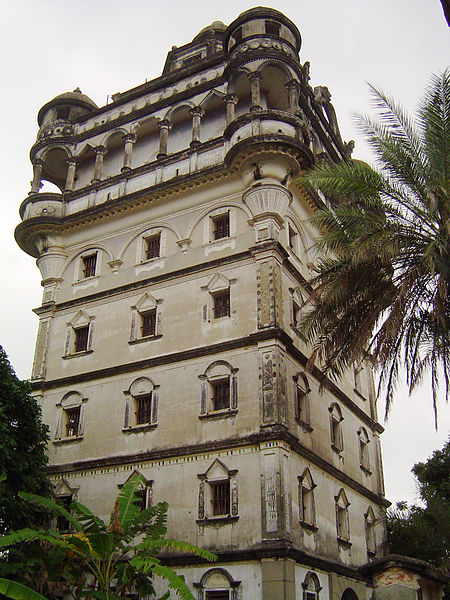 The red-brick dwellings in Quanzhou are built with red bricks and tiles, which are its local materials. The main form of the residences is quadrangle, and retains many characteristics of the residences in the Central Plain. The Quanzhou dwellings uses a lot of stone carvings as decoration.
The red-brick dwellings in Quanzhou are built with red bricks and tiles, which are its local materials. The main form of the residences is quadrangle, and retains many characteristics of the residences in the Central Plain. The Quanzhou dwellings uses a lot of stone carvings as decoration.7. Earthen Buildings in Fujian Province
Earthen Buildings in Fujian Province has a lot of different shapes, such as square, round, swastika-shaped and half-moon-shaped. Among all of these shapes, round earthen building is the most common one. A earthen building is usually a large, enclosed and fortified earth building, rectangular or circular in configuration, with very thick load-bearing rammed earth walls between three and five stories high and housing up to 80 families. Smaller interior buildings are often enclosed by these huge peripheral walls which can contain halls, storehouses, wells and living areas, the whole structure resembling a small fortified city.
This unique building structure is formed due to certain historical and social condition. During 12th Century to 19th Century, armed bandits plagued southern China. Local residents of Fujian built up high-walled buildings for a defense purpose.
8. Fortified Compound in Southern Jiangxi Province
 The Fortified Compounds in Southern Jiangxi Province are very similar to the square Earthen Buildings in Fujian, but usually have corner towers. The materials of the Fortified Compound in Jiangxi are also slightly different: it usually has gray or white exterior walls and black tiles, which is close to the outlook of the vernacular residences in Jiangzhe area.
The Fortified Compounds in Southern Jiangxi Province are very similar to the square Earthen Buildings in Fujian, but usually have corner towers. The materials of the Fortified Compound in Jiangxi are also slightly different: it usually has gray or white exterior walls and black tiles, which is close to the outlook of the vernacular residences in Jiangzhe area.9. The U-shaped Compounds of the Hakka, Guangdong Province

The U-shaped Compounds of the Hakka are rammed earth buildings which contains scores to over a hundred rooms. One feature of the Hakka U-Shaped compounds is that its wall is extremely solid and enduring, which is even hard to hammer a nail into them. The walls are as thick as 30 cm and were built with a mixture of lime, mud, sand and proper quantity of sticky rice and brown sugar. The materials for building the walls are all very common in Guangdong Province. Just like the Fujiang Earthen Buildings, the U-Shaped Compounds of the Hakka is also a product of the needs of living, defense and production of a special historic period.
10. Fortified Buildings in Kaiping, Guangdong Province

The Fortified Buildings in Kaiping is a perfect hybrid of conventional Chinese residences with courtyards and fortified buildings, and western architectural characteristics. During 19th Century, a lot of Chinese in Guangdong Province immigrated to western countries to seek a living. After they made enough money abroad, they usually invest them on building their own family house in their hometown. As a result, they also brings a lot of western art and architectural styles and elements to the local buildings.
11. Flagstone Buildings in Guizhou Province

Guizhou Province is located in the hilly terrain of Yun-Gui Plateau. Flagstone buildings take the materials from the rocky mountains, and are built in a wooden structure wrapped in stone walls and a stone roof. The roofing of the flagstone buildings is especially unique: it is roofed with 2 cm thick stone plates serving as tiles.
12. Residential Buildings of the Koreans
 The Korean Nationality in northeast China has a very characteristic residential form that well suits its cold climate. Most residents have a hipped thatch roof and wide ridges. The interior of the building has a very special air circulation path, which ensures the heat of the interior.
The Korean Nationality in northeast China has a very characteristic residential form that well suits its cold climate. Most residents have a hipped thatch roof and wide ridges. The interior of the building has a very special air circulation path, which ensures the heat of the interior.

No comments:
Post a Comment